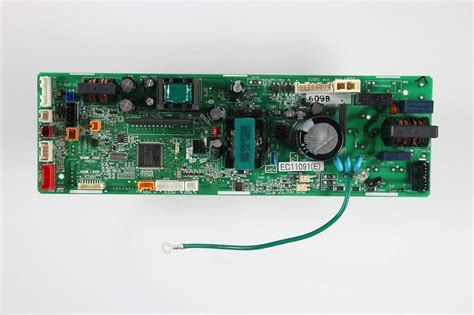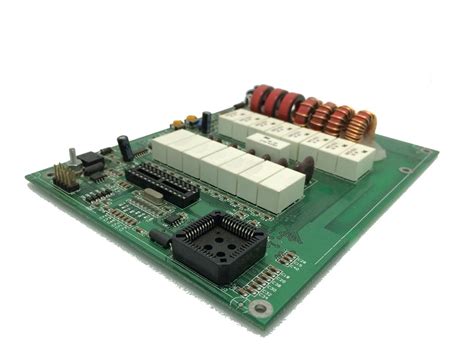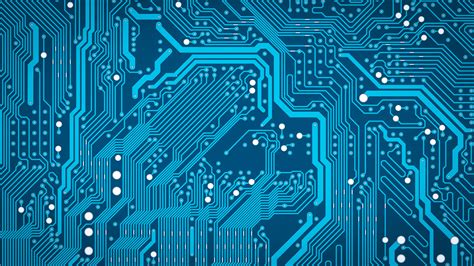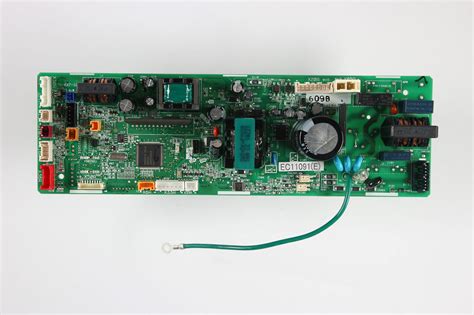Advancements in PCB Assembly for Modern Electronics Manufacturing

Key Takeaways
In the ever-evolving landscape of electronics manufacturing, the significance of pcb assembly cannot be overstated. The advancements in pcba techniques have yielded impressive enhancements in both efficiency and precision, which are critical for meeting the rising demands of high-performance electronic devices. Key innovations include automated soldering processes, which eliminate human error and significantly reduce production time. Moreover, the introduction of advanced materials plays a pivotal role in achieving finer circuitry and improved thermal management, essential for today’s compact electronic designs.
A notable takeaway is the integration of smart manufacturing technologies within the pcb assembly process. These technologies leverage data analytics and machine learning to optimize production workflows, ultimately improving yield rates and product reliability. Quality control strategies have also evolved, with real-time monitoring systems ensuring that each step of the pcba process meets rigorous standards.
As we look toward the future, it’s clear that these advancements will continue to shape not only manufacturing practices but also innovation in product design. The ongoing development in materials science and automation techniques will likely lead to even more transformative changes in how we approach pcb assembly for next-generation electronics.
| Key Innovations | Benefits |
|---|---|
| Automated Soldering | Reduces production time and error |
| Advanced Materials | Enables finer circuitry & thermal management |
| Smart Manufacturing Tech | Optimizes workflows and improves yield |
In summary, understanding these key takeaways equips professionals in the field to navigate the continuous changes within pcb assembly, ensuring they remain competitive as technology advances.

Introduction to PCB Assembly in Modern Electronics
The landscape of PCB assembly (or PCBA) has transformed dramatically in recent years, largely due to the rapid advancements in technology and the increasing demand for smaller, faster, and more efficient electronic devices. PCB assembly serves as the backbone of modern electronics manufacturing, enabling the integration of complex circuits on compact boards. This integration not only enhances performance but also drives down production costs and improves overall product reliability. One major trend shaping this sector is the rise in automation; automated processes reduce human error and increase production speed, allowing manufacturers to meet tighter deadlines while maintaining high standards of accuracy and quality. Additionally, the development of advanced materials—such as high-frequency laminates and flexible substrates—supports PCBA operations by enabling designs that were previously unattainable. These innovations reflect an industry that is not only adapting to current demands but also laying the groundwork for future advancements in electronic manufacturing technologies. As electronics continue to pervade everyday life, understanding these developments in PCB assembly becomes essential for stakeholders looking to stay competitive and innovative.
Key Innovations in PCB Assembly Techniques
Recent innovations in PCB assembly (PCBA) have significantly transformed the landscape of modern electronics manufacturing. One of the primary advancements includes the integration of surface-mount technology (SMT), which allows for the placement of components directly onto the surface of PCBs, leading to a reduction in size and improved performance. Additionally, automated optical inspection (AOI) systems have emerged as a vital component in enhancing assembly accuracy and reducing defects. This technology employs high-resolution cameras and advanced algorithms to detect inconsistencies in real-time, ensuring that each pcb assembly adheres to high-quality standards.
Moreover, the rise of flexible printed circuit boards (FPCBs) is driving new opportunities for design and functionality. These flexible solutions enable manufacturers to create lightweight products with complex shapes that traditional rigid boards cannot accommodate. Another notable innovation is the introduction of advanced soldering techniques, such as Laser Soldering, which provides more precise control over heat application and minimizes thermal damage to sensitive components.
Furthermore, there has been a shift toward utilizing smart manufacturing technologies within PCBA processes. The use of Internet of Things (IoT) devices allows manufacturers to gather real-time data from their production lines, facilitating proactive decision-making and enhancing overall operational efficiency. Together, these innovations are not only elevating the quality and reliability of electronic products but also shaping sustainable practices by reducing waste and optimizing resource use during the assembly process. As these technologies continue to evolve, they promise to further refine the dynamics of PCB production in an increasingly competitive market.

Impact of Automation on PCB Manufacturing Efficiency
The integration of automation in PCB assembly processes has revolutionized efficiency and productivity within the electronics manufacturing sector. By employing automated systems and robotics, manufacturers have significantly reduced the time required for various stages of PCBA production. This shift not only accelerates the assembly line but also enhances precision; machines can perform tasks with a level of accuracy beyond human capabilities, minimizing defects and rework. Furthermore, automation allows for real-time monitoring and data collection, providing insights into production processes that can drive continuous improvement. As automated solutions become increasingly sophisticated, they are capable of handling more complex tasks, thereby increasing the versatility of PCB assembly operations. With reduced labor intensiveness, companies can allocate human resources to more strategic tasks such as design optimization and innovation, ultimately leading to higher quality products. In this rapidly evolving landscape, staying ahead in the adoption of these automated techniques is crucial for any business aiming to thrive in modern electronics manufacturing.
Advanced Materials and Their Role in PCB Assembly
The landscape of pcb assembly has significantly evolved with the introduction of advanced materials that enhance both performance and reliability. These materials, such as high-frequency laminates, thermoplastics, and flexible substrates, are engineered to meet the increasing demands of modern electronics, including miniaturization and higher operational frequencies. The integration of organic laminates has improved thermal stability, allowing for enhanced heat dissipation in high-power applications. Furthermore, the use of conductive inks in printed circuit board assembly (PCBA) techniques has facilitated the development of more intricate designs while reducing production costs and time. This progression towards incorporating innovative materials not only optimizes the mechanical properties of boards but also leads to a substantial increase in yield during manufacturing. Moreover, adopting green materials is becoming imperative as manufacturers prioritize sustainable practices without compromising on precision or quality in their pcb assembly processes. Ultimately, the emphasis on advanced materials plays a crucial role in pushing the boundaries of what is possible within PCBA, thereby shaping the future trajectory of electronics manufacturing.

Quality Control Strategies in Modern PCB Production
In the realm of pcb assembly, quality control is paramount. As electronic devices become increasingly complex, ensuring the reliability of printed circuit board assemblies (PCBA) is essential. Various strategies have emerged to enhance quality throughout the pcba process. One effective approach is the implementation of automated optical inspection (AOI) systems, which provide real-time feedback on component placement and solder joint integrity. Such systems can quickly detect discrepancies that manual inspections might overlook, leading to improved accuracy.
Furthermore, embracing statistical process control (SPC) can significantly boost quality assurance by monitoring production variables throughout the manufacturing process. By analyzing data trends, manufacturers can proactively address potential defects before they escalate into larger issues. Additionally, incorporating reliability testing methods such as thermal cycling and vibration testing allows for an in-depth understanding of how pcba products will perform under varied conditions.
"Implementing rigorous quality control measures in PCB assembly ensures longevity and reliability in electronic products."
This approach not only satisfies customer demands for high-quality electronics but also reduces costs associated with rework and warranty claims. Thus, establishing robust quality control strategies is not just an operational necessity; it is a competitive advantage that shapes the future landscape of pcb assembly in modern electronics manufacturing. By focusing on these measures, manufacturers can foster trust with their clients while driving innovation forward in this ever-evolving industry.

Future Trends in PCB Assembly Technologies
As the electronics industry continues to evolve, pcb assembly technologies are witnessing transformative advancements that promise to reshape manufacturing processes. One of the prominent trends is the integration of smart automation into pcba, which not only enhances production speed but also ensures a higher degree of precision. This shift towards automation is increasingly supported by artificial intelligence and machine learning algorithms that optimize routing and placement efficiencies, significantly reducing human error. Furthermore, the use of flexible printed circuit boards (FPCBs) is gaining traction, allowing manufacturers to create more intricate designs in less space without compromising performance. Additionally, eco-friendly materials are being developed to meet sustainability goals, targeting waste reduction in the pcb assembly process. As manufacturers explore these innovations, staying ahead of trends such as additive manufacturing and improved inspection technologies becomes essential for increasing efficiency and maintaining high-quality standards in modern electronics. The future landscape of pcba appears promising, with these trends likely paving the way for more reliable and efficient electronic components tailored for an ever-growing array of applications.
Case Studies: Successful Implementations of Advanced PCB Techniques
In examining the pcb assembly landscape, several case studies stand out, showcasing the successful implementation of advanced PCB techniques that have revolutionized the industry. One notable example is a leading consumer electronics manufacturer that integrated automation into its PCBA processes. By adopting robotic assembly and automated optical inspection systems, the company not only reduced production time but also increased consistency and accuracy in its products. This shift in strategy demonstrated a marked improvement in operational efficiency, reducing defects by over 30% compared to traditional methods.
Another compelling case involves a medical device company that utilized innovative materials in its pcb assembly. The introduction of flexible substrates allowed for the design of compact yet powerful electronic devices essential for modern healthcare. This initiative not only enhanced product performance but also created new opportunities for miniaturization without sacrificing functionality. The collaboration between design engineers and materials scientists proved crucial in overcoming challenges associated with traditional rigid circuit boards.
Moreover, an automotive electronics supplier has embraced the principles of lean manufacturing within its PCBA processes. By streamlining workflows and implementing just-in-time inventory systems, this company achieved significant cost reductions while maintaining high-quality standards. The strategic focus on waste minimization has resulted in faster turnaround times and improved responsiveness to changing market demands.
These case studies illustrate how companies are leveraging cutting-edge techniques in pcb assembly, transforming challenges into opportunities while pushing the boundaries of what is achievable in modern electronics manufacturing. As these innovative strategies gain traction, they set a precedent for future developments within the industry, highlighting the importance of adaptability and continuous improvement.

Conclusion
In summation, advancements in PCB assembly processes are pivotal in steering the future of modern electronics manufacturing. The integration of innovative techniques such as automated soldering, advanced pick-and-place machines, and real-time quality monitoring has markedly increased the speed and accuracy of PCBA. Moreover, the emergence of advanced materials tailored for specific applications enhances the performance and reliability of electronic products. As industries continue to evolve, understanding these transformations in pcb assembly will become increasingly vital. The adoption of smart technologies and data analytics promises to further refine PCBA practices, ensuring that manufacturers can meet ever-growing consumer demands for efficiency and precision. Consequently, staying abreast of these developments will not only benefit manufacturers in improving operational efficiency but also contribute significantly to product quality and customer satisfaction. The continual exploration of emerging trends within the realm of PCB assembly is essential for maintaining a competitive edge in an increasingly sophisticated market landscape.
FAQs
What is PCB assembly?
PCB assembly, or PCBA, is the process of connecting electronic components to a printed circuit board (PCB) to create a completed electronic device. This involves techniques such as soldering, solder paste application, and surface mount technology.
Why is PCB assembly important in electronics manufacturing?
The pcb assembly process is crucial as it determines the quality and functionality of electronic products. Innovations in this field lead to improved reliability and efficiency, allowing manufacturers to meet increasing demands for performance and miniaturization.
What advancements have been made in PCB assembly recently?
Recent advancements include automation in the pcb assembly process, such as robotic arms and automated optical inspection, which enhance precision and reduce the chance of human error. Additionally, the use of advanced materials facilitates better thermal management and electrical performance.
How does automation impact PCB assembly efficiency?
Automation streamlines production by minimizing manual labor while increasing speed and precision. This shift improves overall productivity in PCBA, ensuring quicker turnaround times without compromising on quality.
What role do advanced materials play in PCB assembly?
Advanced materials are essential as they influence the thermal properties, conductivity, and durability of PCBs. The use of these materials leads to smaller form factors and increased longevity of electronic components.
What are common quality control strategies in PCB production?
Quality control strategies include rigorous testing methods such as functional testing, x-ray inspection for solder joints, and the implementation of standards like IPC-A-610 to ensure that products meet industry specifications.
For more detailed insights into pcb assembly, please click here: Andwin PCB Assembly







